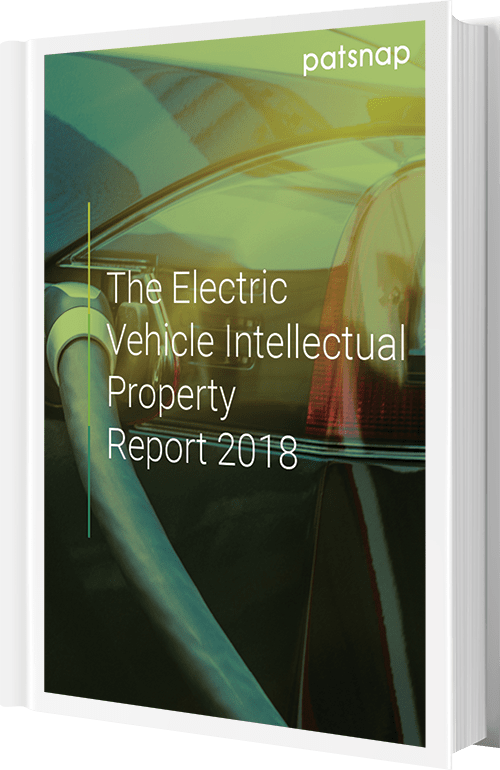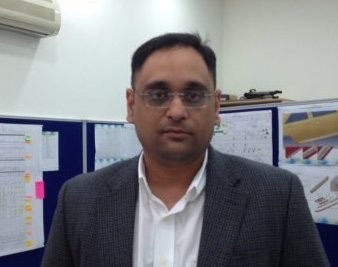Automotive R&D challenges and solutions: innovation leaders discuss
The world of automotive is at a crucial juncture in its development. Technologies spanning artificial intelligence and smart manufacturing are transforming the kinds of products we can deliver to solve customer and production challenges. Tesla—an emerging innovation leader—has released its intellectual property as open source, while seasoned incumbents continue to jealously guard theirs. There are even socio-political implications, with the rise of autonomous vehicles leaving long-distance truck drivers (and others) fearful for their livelihoods.
The evolution of automotive R&D is cranking out difficult problems and the people best placed to solve them are the innovators driving all this change. So, we asked them:
“What are today’s biggest challenges to automotive R&D and which solutions would you propose?”
Below are their answers.
SEAT

Francisco Requena Alcaraz, Head of Innovation and Smart Factory
CHALLENGE: Disruptive innovation
Three disruptive technologies are going to completely change the paradigms of manufacturing as we know them today.
In a company like SEAT, artificial intelligence (AI) is going to bring significant disruption. Being able to manage the vast amount of information we generate, as well as interconnecting with other ecosystems of suppliers and customers, is going to provide us with an unparalleled catalyst for transformation. Through the Internet of Things, we will gradually incorporate intelligence into machines—and people will transition from programming machines to being their trainers.
Additive manufacturing is also going to completely change the supply chain as we know it. It will allow us to incorporate more and more customisation capabilities and, therefore, value into the production line. Finally, virtual reality is improving in leaps and bounds, and we will soon be able to generate ad-hoc virtual training environments. Virtual reality will even allow us to interact in different languages with people located in other parts of the world, as if we were face to face.
During the first three industrial revolutions, industry changed society—in this case, it is society that is changing industry. The great challenge, therefore, is adapting our staff to this new paradigm—without losing the valuable knowledge they possess. SEAT’s employees want to adapt to this new reality and we have an enormous pool of potential talent.
SOLUTION: Technology for customers, by customers
Customers and users of technology are now the starting point for innovation.
Innovation carries an implicit risk and uncertainty which needs to be managed. For us, innovation doesn’t begin with the technology. That is, we don’t do “push innovation”, trying to search for a customer for a particular technology. Before going out to innovate, it is important to be very sure that you are going to use the resources you have available on what can provide the most value.
Our methodology is based on what we call “pull innovation”. We start with our strategy, looking at how we can achieve our goals from a new digital perspective. Then, we narrow the strategy down into specific ideas, which we analyse to determine whether they are feasible with one technology or another.
What allows us to implement our innovation model is the fact that we put the possibilities that exist, within the reach of the users of the technology. The idea is for the employees to identify the challenges and for the Smart Factory Team to advise on, propose and implement solutions to those challenges.
Groupe PSA

David Allard, Innovation Outpost Manager
CHALLENGE: Feeling upside down
I would say the challenge is probably trying to combine a top-down approach (where innovation is 100% driven by company’s priorities and vehicle innovation needs) with a bottom-up approach (where innovation is driven by changes in consumer electronics, innovation in laboratories, universities, suppliers, start-ups and so on). So, I would say managing the balance between these two can be tough.
SOLUTION: Getting right side up
Combining agility with organisational discipline can help.Agility lies in consciously reaching out to suppliers, universities and start-ups, and being flexible enough to do so—while, at the same time, having what I would call a disciplined approach to innovation. This is about having a more top-down approach, where you’re making sure R&D resources have clear objectives—and that these are completely aligned with the company’s goals as well as clients’ needs.

Download the free Electric Vehicle IP Report 2018. This comprises worldwide patent analysis, investigating filing trends, top innovators, stealth tech, emerging companies and potential litigation risks, among other insights.
Bereskin & Parr LLP

Jim Hinton, Intellectual Property (IP) Lawyer
CHALLENGE: Fear of change
The biggest challenge in automotive R&D is the reluctance to change. Compared with other high-technology sectors, automotive and manufacturing experiences a much slower pace of change.
Automotive manufacturing has a heavy reliance on labour and a corresponding difficulty with driving manufacturing efficiency. Furthermore, the concentration of global market leadership in relatively few firms means disruption is harder.
SOLUTION: Embrace the unknown
The successful companies that I work with treat automotive R&D as a high-technology play. There is an increased adoption of the pace of change and strategies from agile, high-tech companies. We must adopt new advanced manufacturing technologies—from simple automation and reduction in human-created inefficiencies, to increased manufacturing throughput. In successful companies, I see this adoption of technology and upgrades to the manufacturing process of the automobile itself.
On a positive note, automotive R&D will continue to be strong because of the developed market and continuing demand for its product. Companies that can quickly adopt emerging technologies, like artificial intelligence and driverless vehicles, will succeed.
I envision the value created in the auto sector shifting from hardware, to software and data. Corporate value will move from making the devices and cars, to the ownership of innovation assets—such as the data that fuels the AI and IP behind the technology. Pioneers should use their lead in data and IP stockpiles to secure regulatory approval, providing exponential market monopolies. Countries that rely exclusively on auto manufacturing to underscore their economy will see profitability eroded by those that hold strong data and IP positions. Countries should adopt strategies to own these automotive innovation assets.
Toyota Indus

Faraz Anwar Shah, Head of Supplier Quality Development (Product Development Department)
CHALLENGE: Money! It’s a gas…
I am mostly involved in automotive supplier quality process improvement. Therefore my main focus is preventative maintenance and calibration of machines, tools, and dies. The major challenge is finances—most original equipment manufacturers (OEMs) demand reductions in part piece price. This makes suppliers reluctant to invest heavily in state-of-the-art machinery, tooling and design. When they do not invest in or maintain the dies on a regular basis, we get problems in the assembly plant—such as body accuracy issues and fitment challenges.
SOLUTION: Spread the costs
There’s a two-fold potential solution. We can directly assist the supplier in monetary terms, by subsidising machinery and robot costs, or by having the supplier buy the latest equipment and then amortising the cost through tooling, by baking it into part piece pricing.
The second part is about collaboration between OEMs—or the lack thereof. Most R&D work is performed in American and German companies—innovation leaders such as General Motors, BMW and Mercedes Benz are leaders—which invest in colleges and universities through their engineering programmes and faculty, thereby funding the development of new technologies. In return, the same university engineers go to work for these companies and use their research to come up with new products of innovation.
In my opinion, the major challenge facing R&D is collaboration between two OEMs. It may sound strange but if you look into it you will find that, even after two companies sign a joint venture agreement (JV), it is in human nature not to share and dissipate information. People tend to hold on to their research, due to the fear of not getting full credit. The only way is to do individual research and come up with new technologies. Mercedes and BMW do not take part in JVs. This may sound strange because here we are putting down the whole concept of teamwork, but the reality on the ground is these are the facts.
Download your free copy of the report on “Energy Storage in Electric Vehicles”
Ford, Toyota and Nissan are familiar names in automotive and fuel cell technology, but what do you know about TGOOD and Thunder Power? Is Japanese innovation on the decline? What on earth is going on in China? And does a vacuum cleaner hold the electric car keys?
The report is a worldwide patent analysis investigating:
- Patent application trends
- Top applicants
- Underlying tech drivers
- Emerging companies
And much more. Download here: The Electric Vehicle Intellectual Property Report 2018.